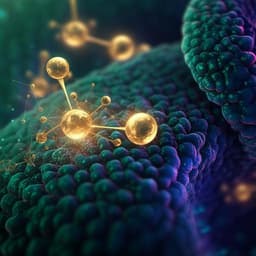
Biology
An economic demand-based framework for prioritization strategies in response to transient amino acid limitations
R. Gupta, S. Adhikary, et al.
This fascinating study conducted by Ritu Gupta, Swagata Adhikary, Nidhi Dalpatraj, and Sunil Laxman explores how yeast cells intelligently restore essential amino acids when their supply is disrupted. The researchers quantified the costs and demands of amino acid biosynthesis, revealing that metabolic priorities lead to a remarkable restoration response, particularly for arginine. Discover the implications for metabolic engineering and amino acid responses in this compelling research!
~3 min • Beginner • English
Related Publications
Explore these studies to deepen your understanding of the subject.







